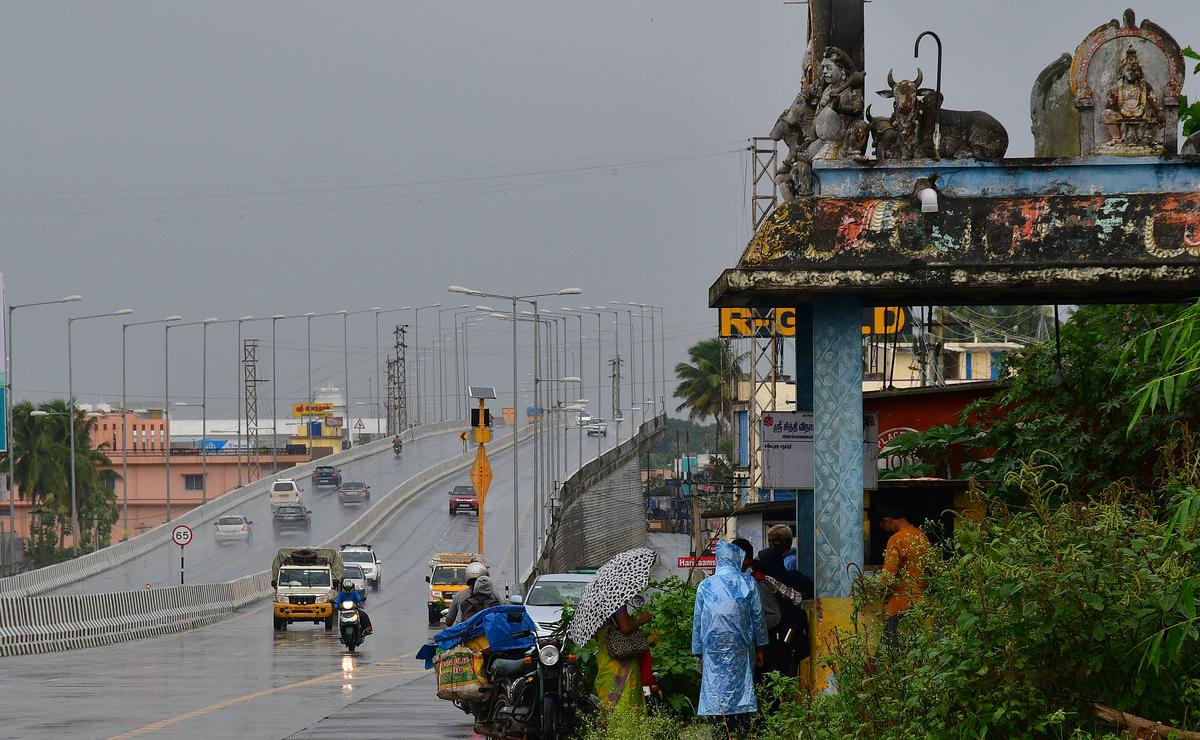It often rains in the small town since it lies right in front of the Palghat Pass of the Western Ghats
It often rains in the small town since it lies right in front of the Palghat Pass of the Western Ghats
It was one of those monsoon evenings when the rain played hide and seek. We were on our way to Pollachi from Coimbatore. Lulled by smooth roads and rhythmic traffic, we didn’t notice that it began to pour. At our destination, however, there were no signs of rain. Nothing unusual, one might think: the clouds perhaps were swept away. But when we drove back, it began to pour when we crossed the exact same location as before. It was as though someone held a gigantic hand shower over that particular stretch on the Pollachi-Coimbatore flyover. The town that stands there, is Kinathukadavu.
Ask locals and they would tell you that this is how it has always been. Kinathuadavu is the Chosen One: it rains there even if its neighbours are as dry as dust. “I remember being intrigued by this phenomenon during bus journeys,” recalls Coimbatore-based Patric Johnson who studied at an engineering college in Pollachi.
Kinathukadavu is located adjacent to the Palghat Pass of the Western Ghats
| Photo Credit: PERIASAMY M
They would know where they were even without looking outside. “When the bus crossed Othakkalmandapam and inched closer to Kinathukadavu, we would often be met with the familiar pitter patter of rain on the roof of our college bus,” says 30-year-old Patric. “This was more pronounced on non-monsoon days when it did not rain elsewhere.” Funnily, once they crossed the town, roads would be dry. “Evenings, especially, will be chilly when the bus crossed the stretch,” he says, adding that he asked about this to his college seniors. It was something everyone knew of and over the years took for granted as that “town where it always rains”.
The founder-editor of travel magazine Pollachi Papyrus Pravin Shanmughanandam, too says that he experiences this every weekend when he travels to Coimbatore. “It will be interesting to see how this has affected the soil there,” he says. Farmer S Subaathaal, who grows corn and lentils in Kinathukadavu, says that soil there is not fertile through the year, as one would expect. “We have seen better days,” says the 65-year-old. “The fertility depends on the kind of soil in one’s land.”
The rains, however, affect the town’s micro-climate. “We wear sweaters all the time,” laughs Subaathaal. “My neighbour is wearing one as he is working in his fields as we speak.” She has relatives in Coimbatore who call Kinathukadavu ‘mini Ooty’. “My grandchildren would ask me why it is always cold here.”

On the way to Kinathukadavu near Coimbatore
| Photo Credit: PERIASAMY M
The answer, according to weather blogger G Santhosh Krishnan, lies in the town’s location. Santhosh, who runs the Coimbatore Weatherman Facebook page, says, “Kinathukadavu lies right in front of the Palghat Pass of the Western Ghats.” This pass, Santhosh explains, is the longest one along the Western Ghats from Gujarat to Kanyakumari.
“It is around 28 kilometres long,” he says, adding, “This pass traps the moisture-laden winds of the South West monsoon, that originate in the Arabian Sea, when they hit the Western Ghats. We call this the ‘funnelling effect’. While clouds scatter upon hitting the mountains, the pass lets them funnel through.” This sends the gift of rain to nearby Kinathukadavu.
“This phenomenon is unique to the region and has fascinated me for years,” he says. “It is something that has to be studied by the India Meteorological Department.” Santhosh, who has been weather blogging for 15 years says, “In my initial years into this hobby, I have wondered why sometimes, rain clouds do not travel to Coimbatore.” Seeking answers, he travelled to the Anamalais and nearby Padhimalai. The Coimbatore Weatherman often travels to the Palghat pass to “sit and observe the clouds.”
























